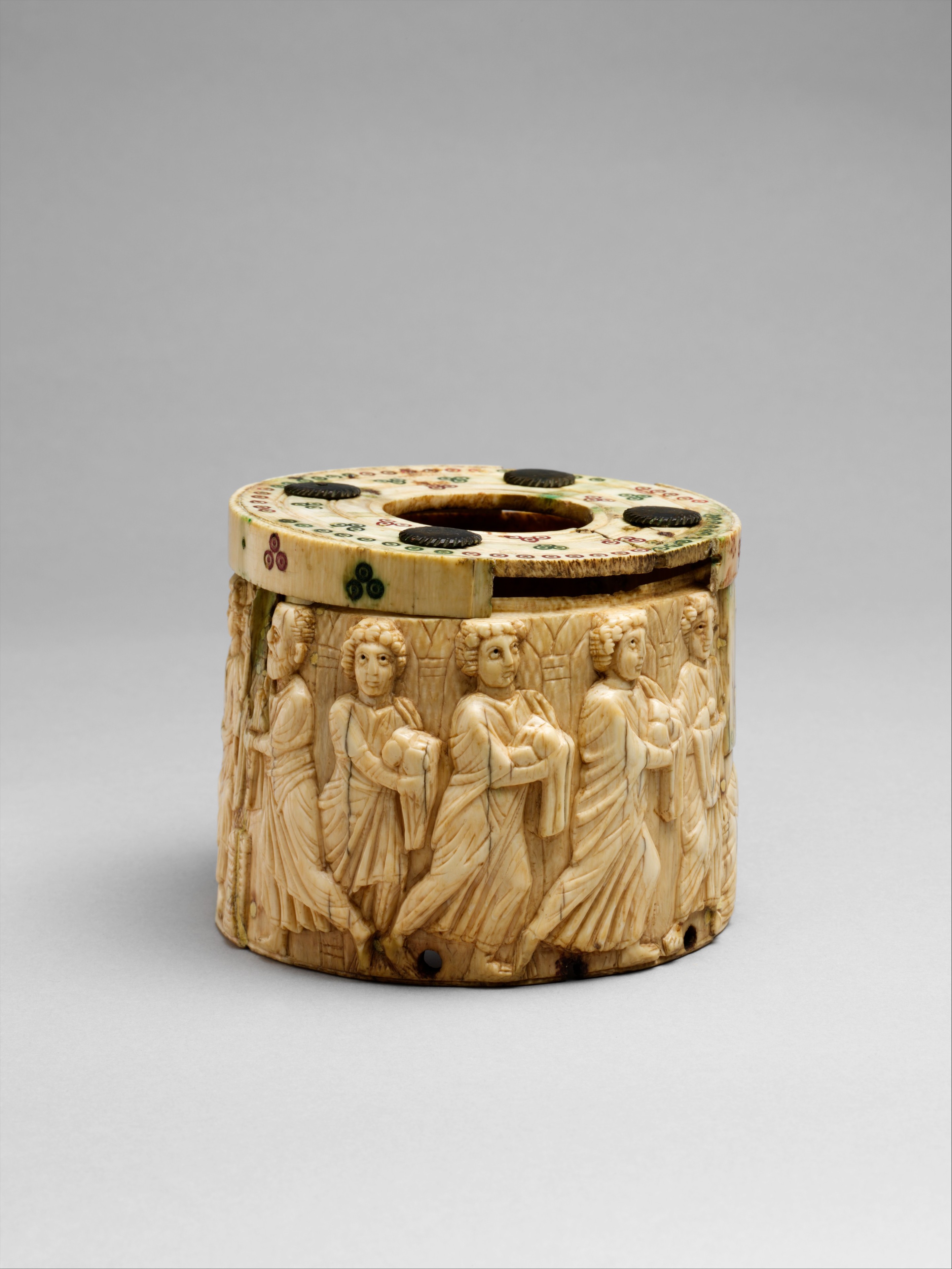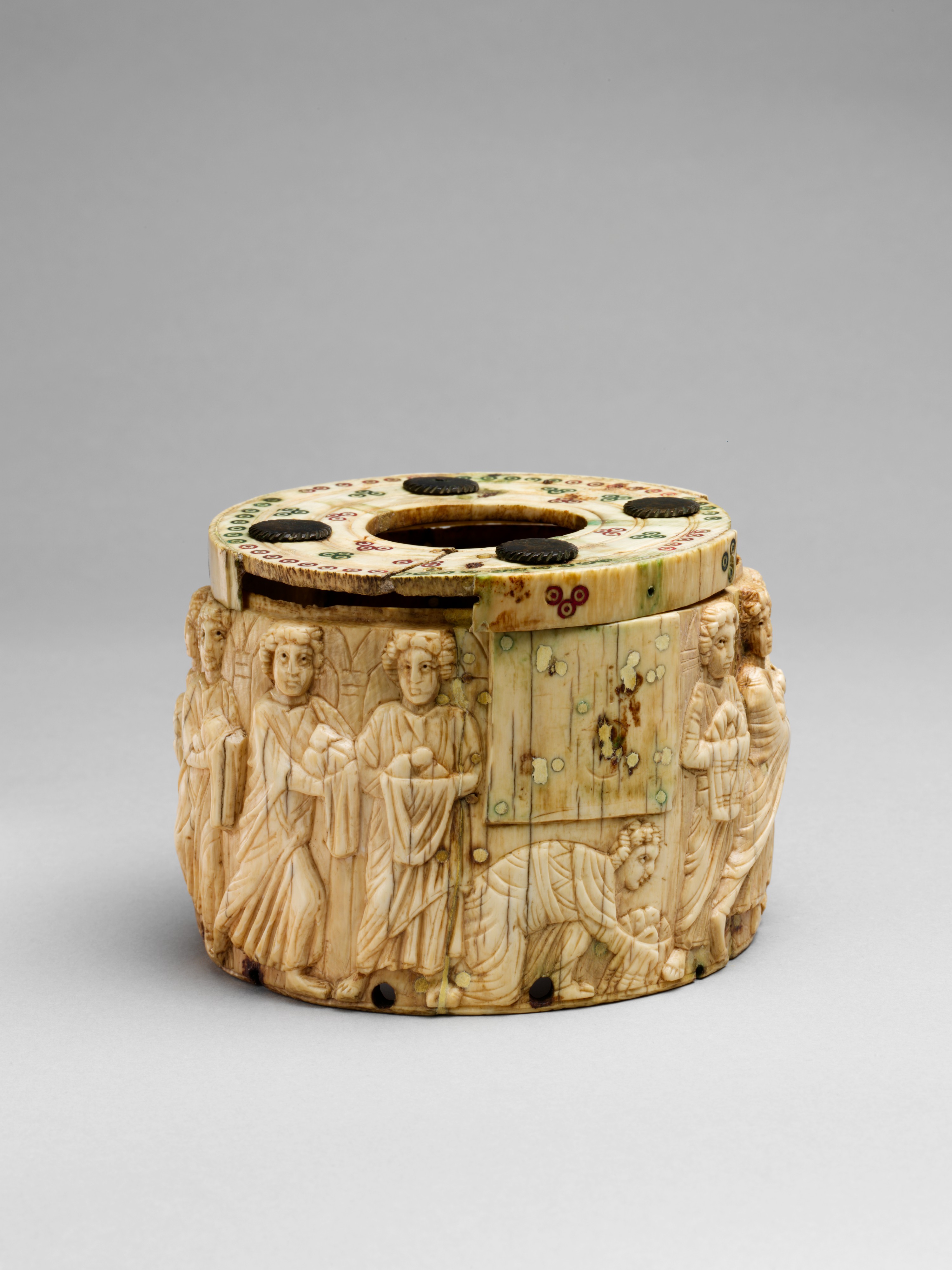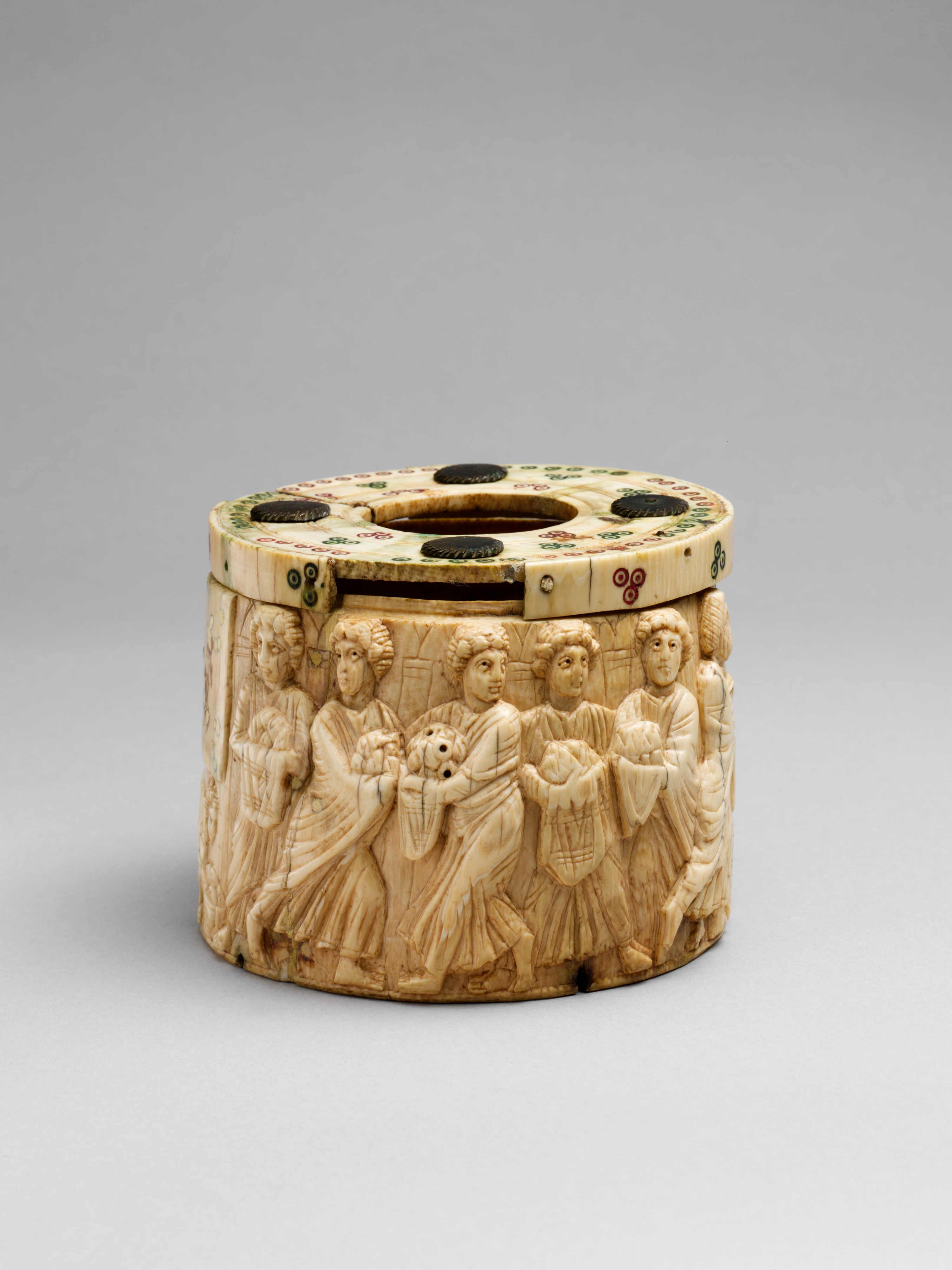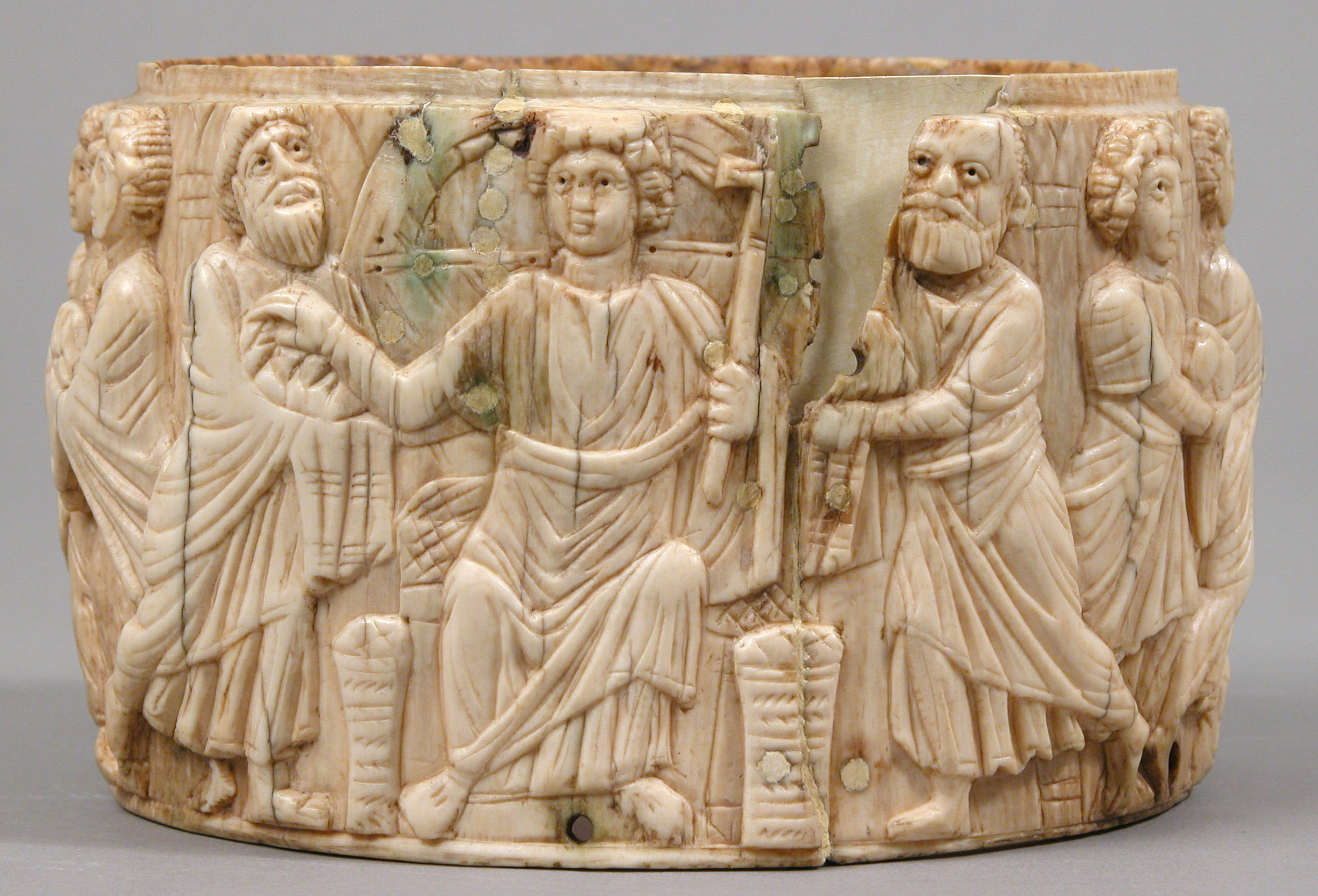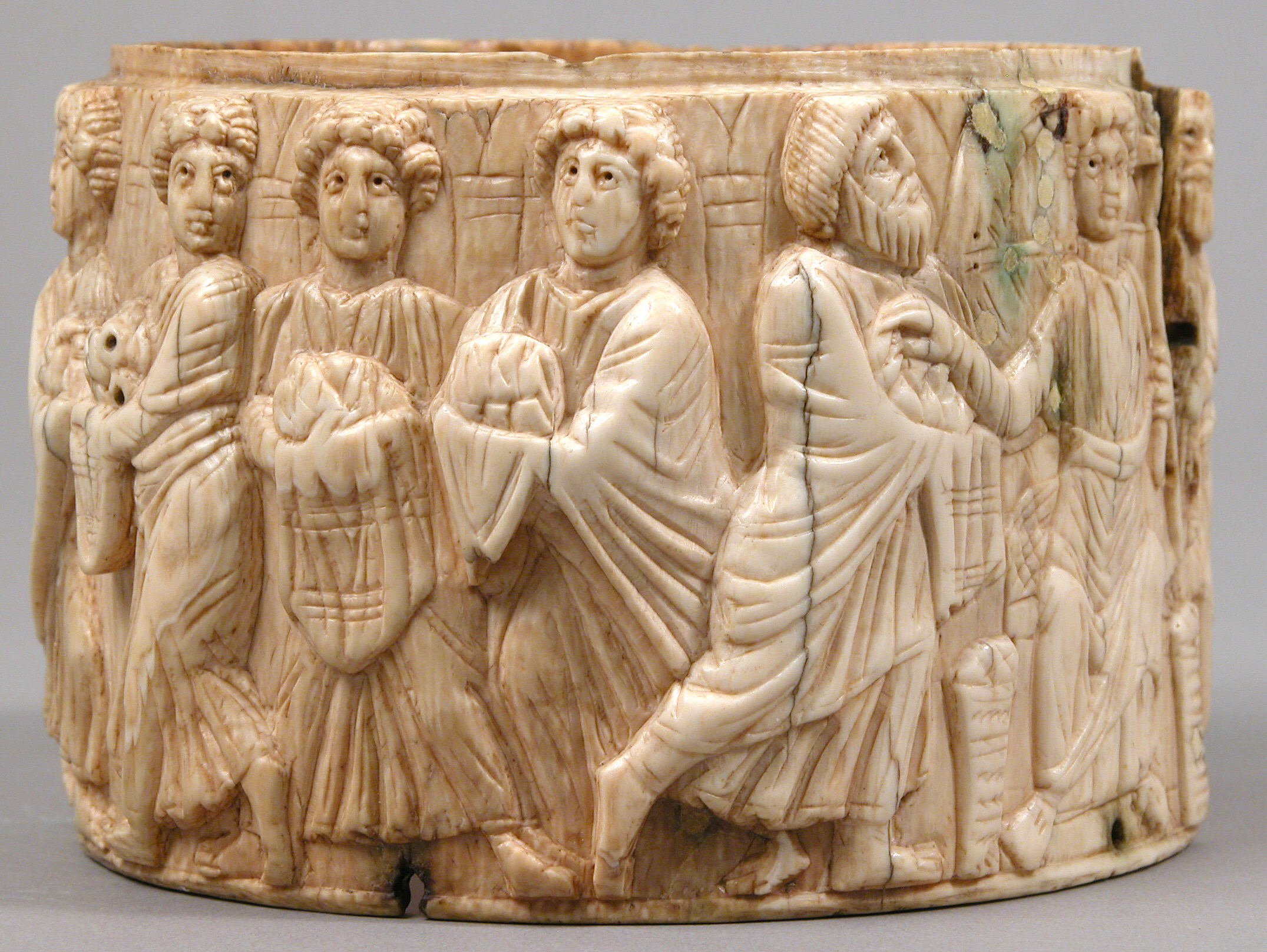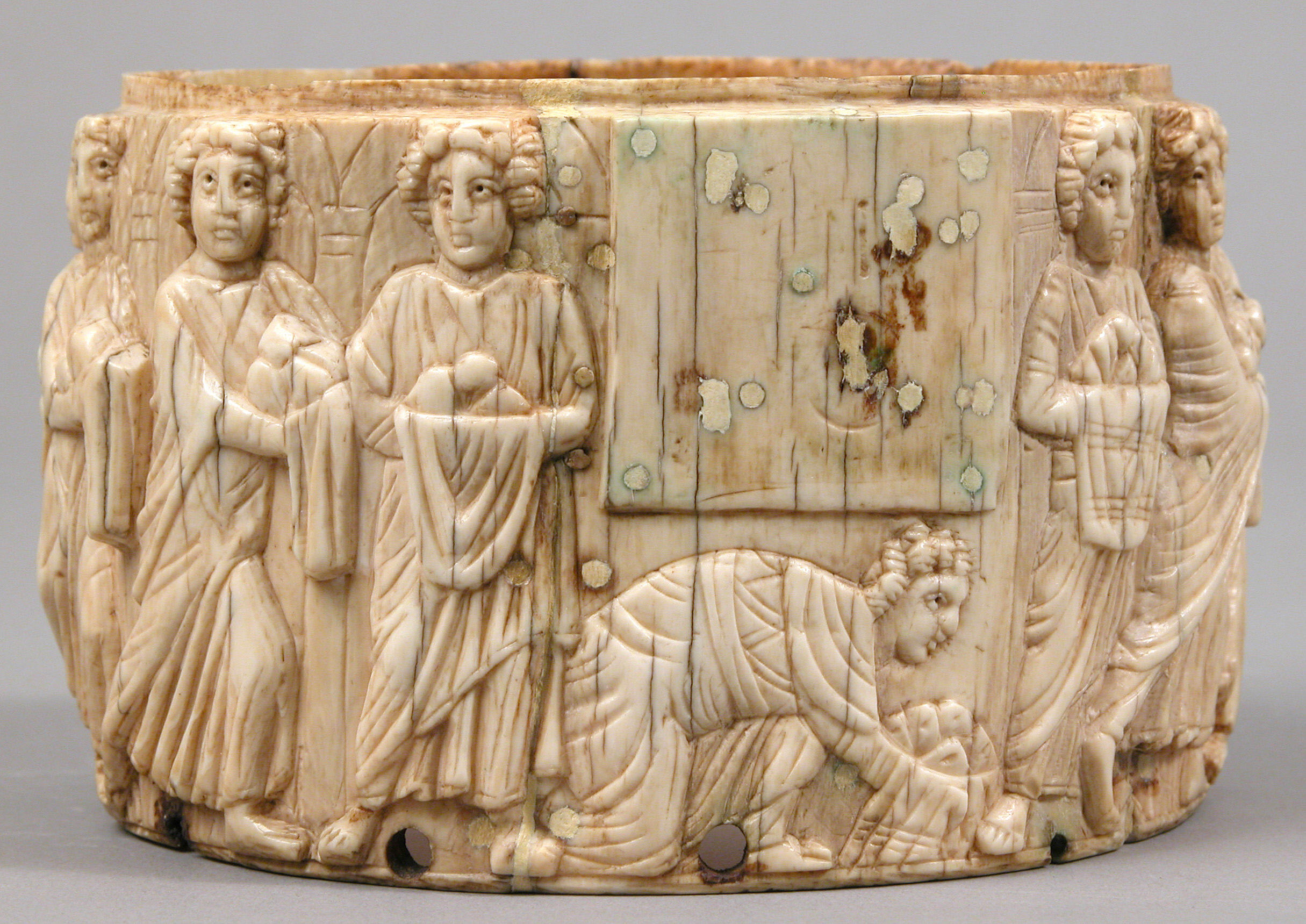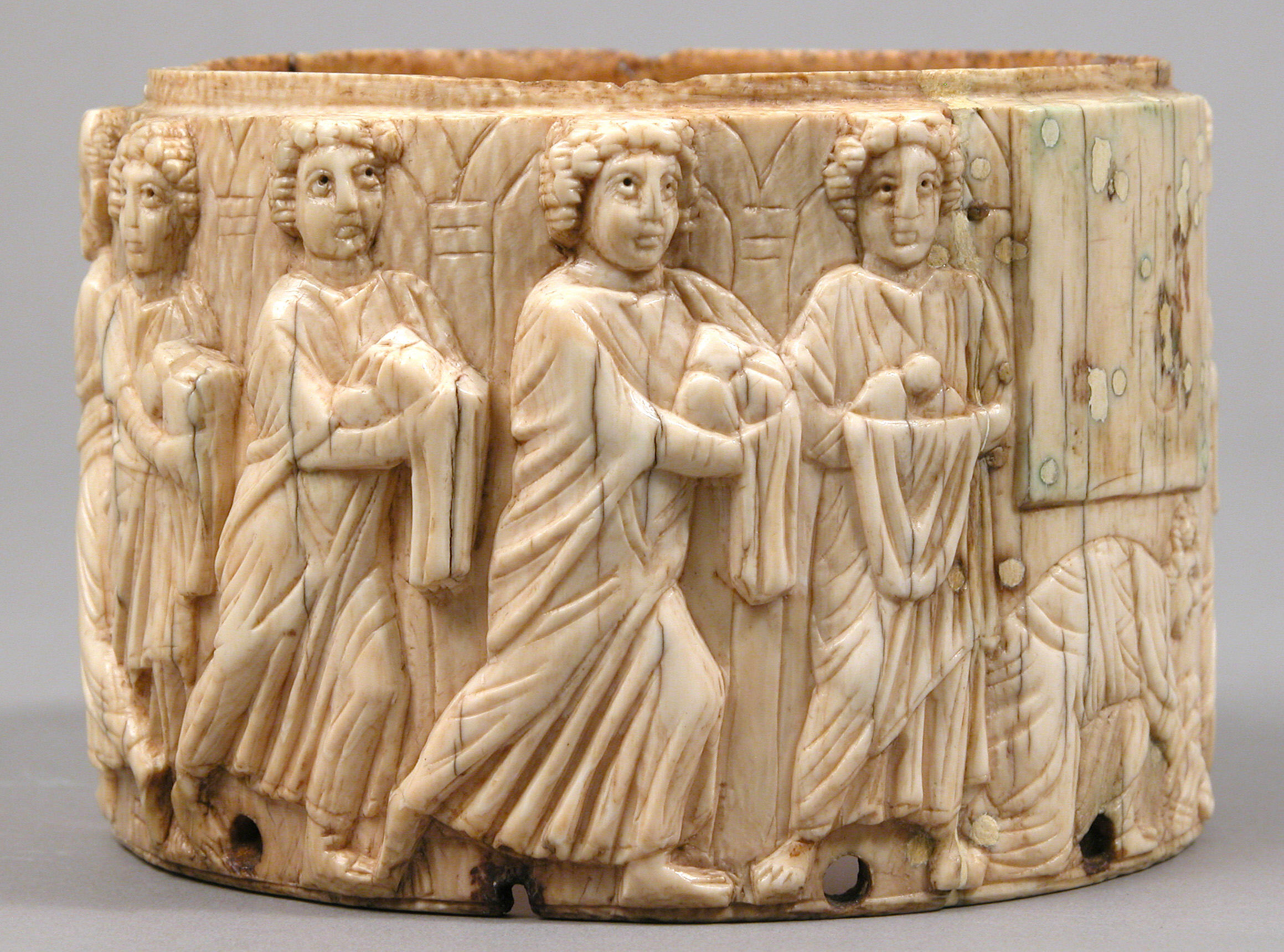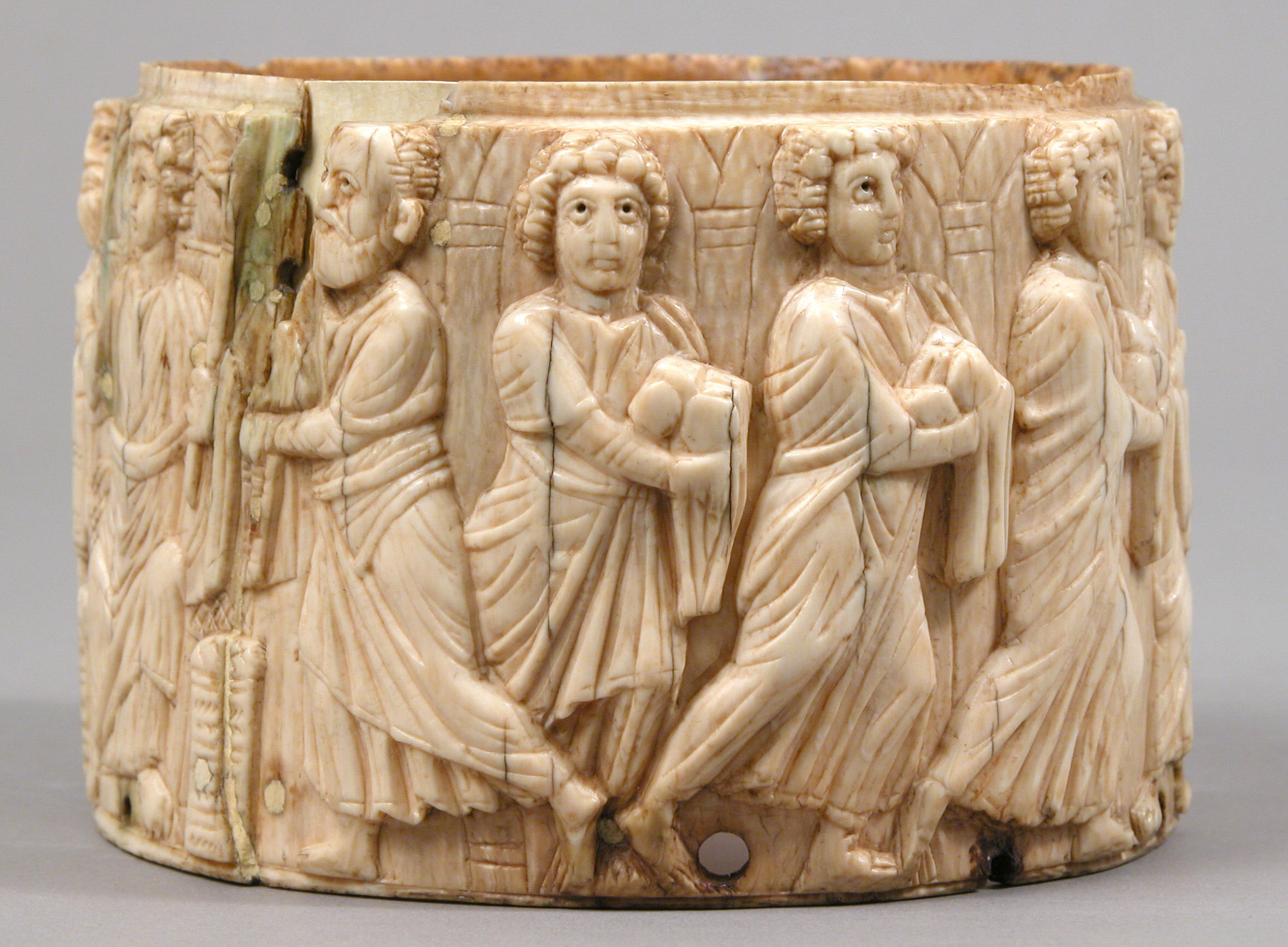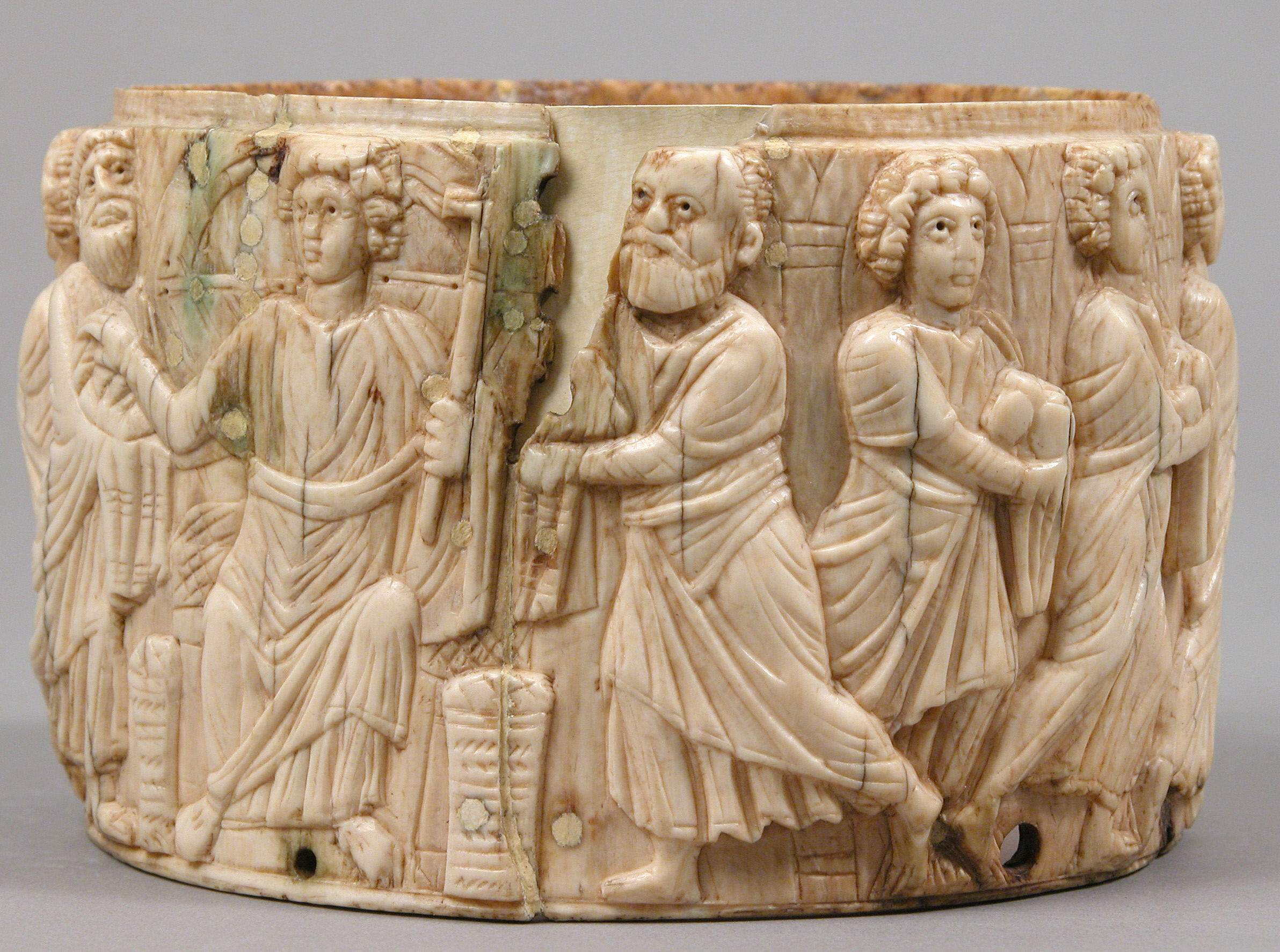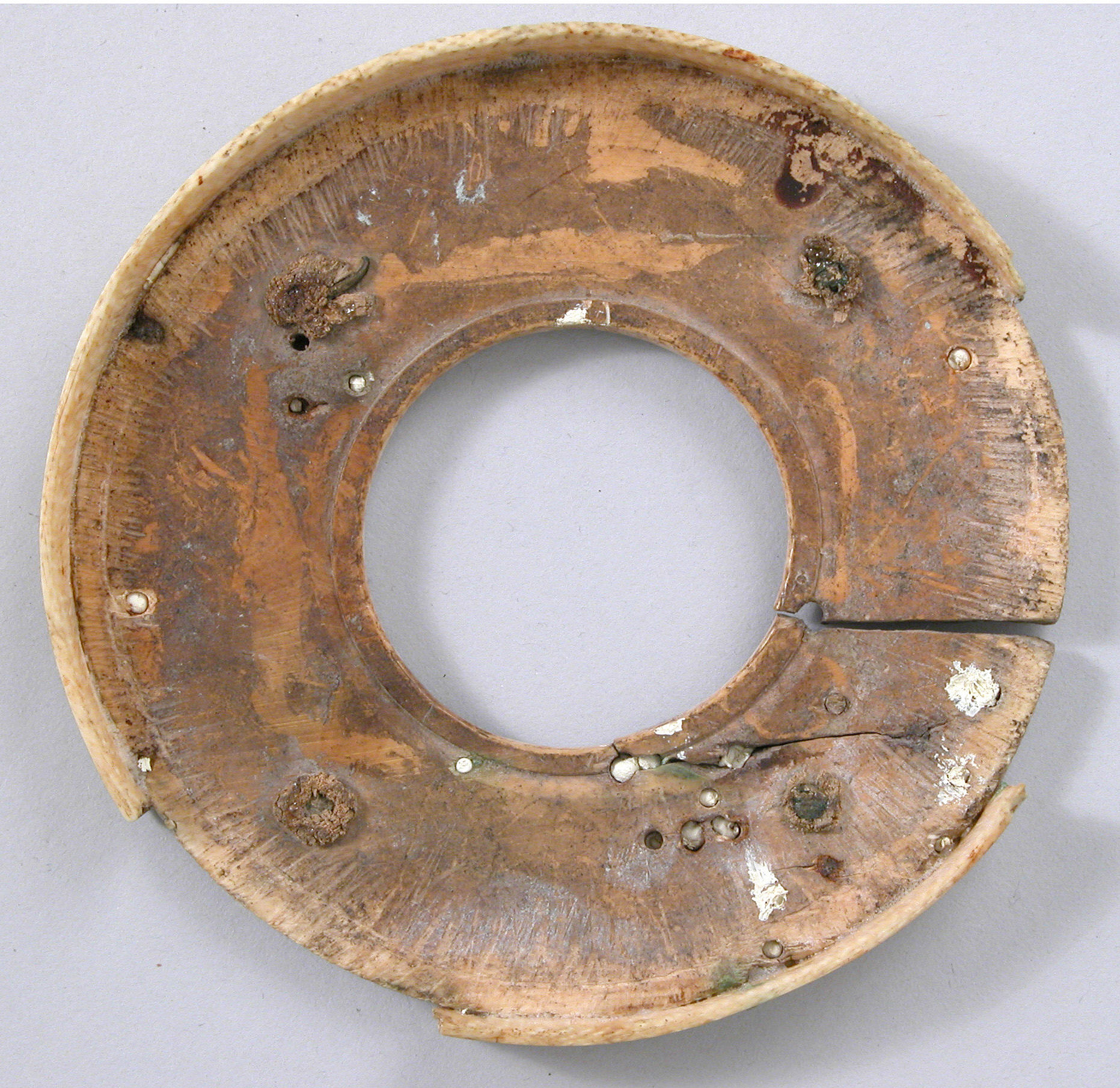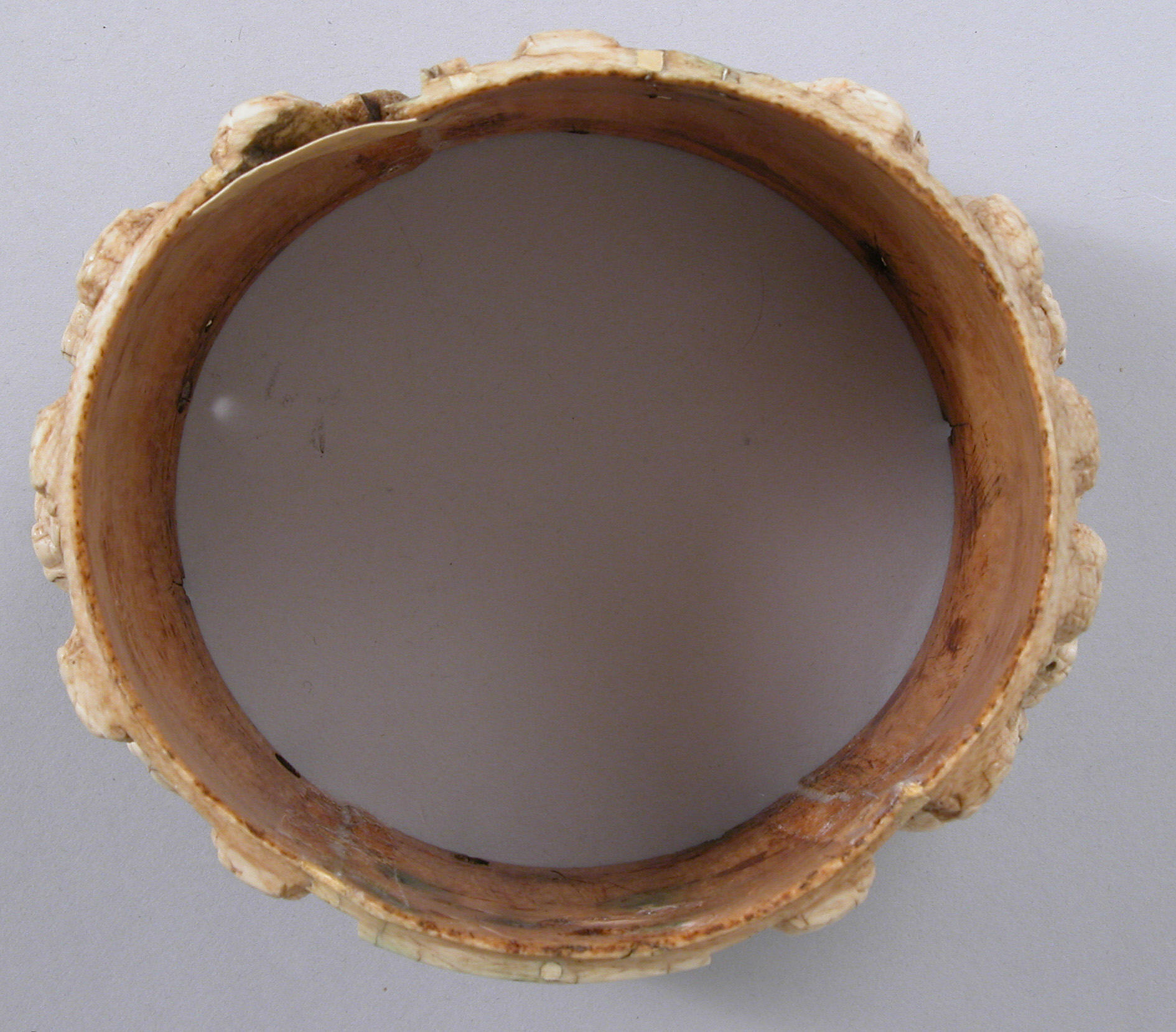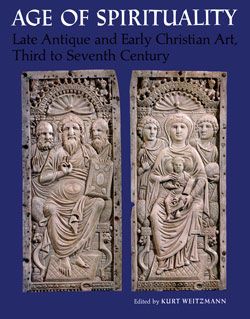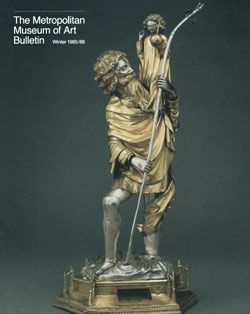Circular Box (Pyxis) with the Miracle of Christ’s Multiplication of the Loaves
Not on view
En el siglo XIII, esta caja cilíndrica del siglo VI procedente del norte de África entró a formar parte del tesoro de San Pedro de la Rúa, una iglesia situada en una frecuentada ruta de peregrinación a Santiago de Compostela. La pieza, que ya entonces era una antigüedad, había recorrido una gran distancia desde su lugar de origen acompañada de una tapa de fecha desconocida con la que se había reemplazado la que tenía inicialmente. Aunque los expertos han sugerido que la tapa fue fabricada en tierras islámicas, la sencillez de su decoración hace difícil determinar su procedencia.
This sixth-century cylindrical box from North Africa entered the treasury of San Pedro de la Rúa, a church located on a busy pilgrimage route to Santiago de Compostela, in the thirteenth century. Already an antique by then, the box had traveled far from its place of origin, bearing a replacement lid of uncertain date. Though scholars have suggested the lid was manufactured in Islamic lands, its simple decoration makes it difficult to place.
Due to rights restrictions, this image cannot be enlarged, viewed at full screen, or downloaded.
This artwork is meant to be viewed from right to left. Scroll left to view more.


